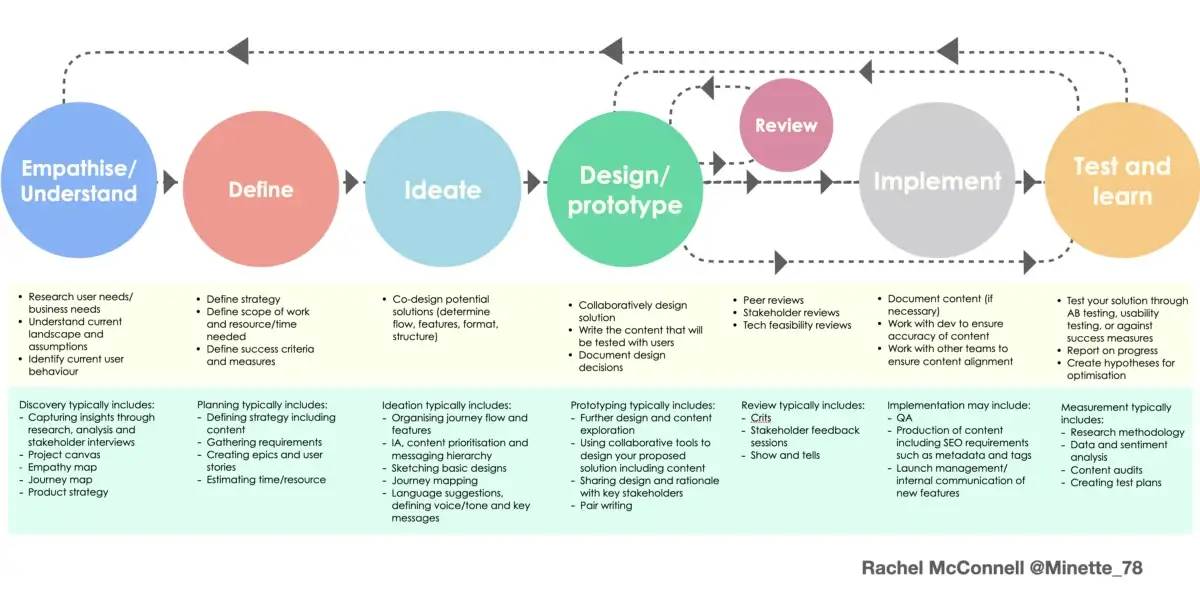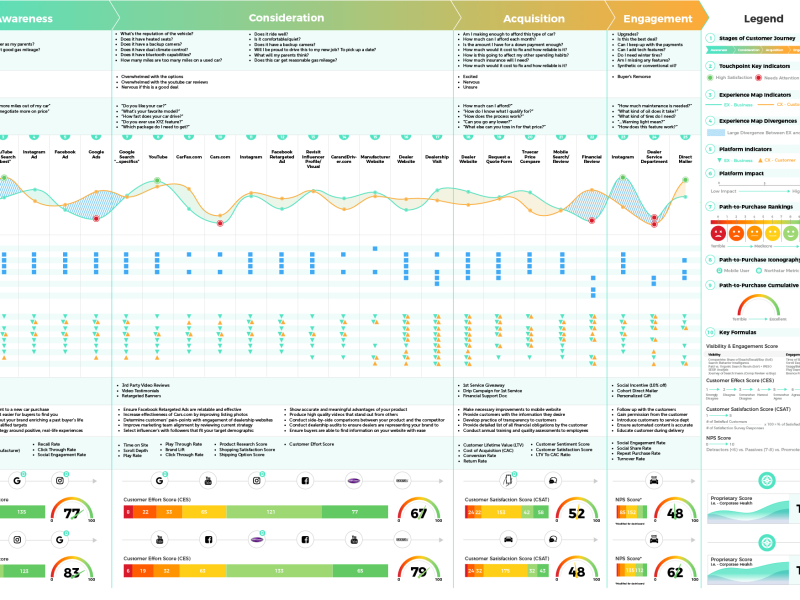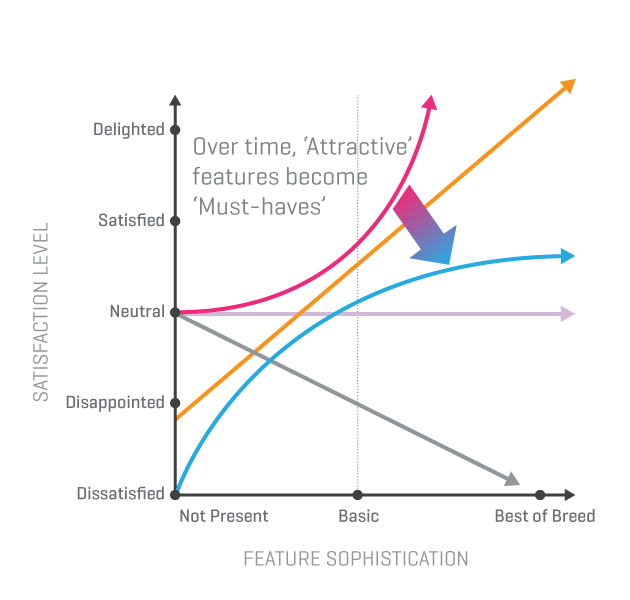Human-Centered Design (HCD) has revolutionized the way products, services, and experiences are created by placing the end-user at the heart of the design process.
This methodology focuses on understanding and addressing the needs, wants, and limitations of the people who will ultimately use the product.
In this blog post, we will explore the principles, stages, roles, and common pitfalls of Human-Centered Design, offering actionable insights to help your product design process succeed.
What is Human-Centered Design?
Human-Centered Design is a systematic and iterative approach to problem-solving that prioritizes the end user. By conducting thorough research, creating prototypes, and testing with real users, designers aim to develop intuitive, user-friendly solutions that effectively meet user needs.
The core principles of Human-Centered Design include:
- Empathy: Deeply understanding the user’s needs and experiences.
- Collaboration: Bringing together diverse perspectives and skills.
- Iterative Development: Continuously refining designs through feedback.
- Focus on Context: Designing for the specific environments and situations in which the product will be used.
Stages of Human-Centered Design
The Human-Centered Design process can be broken down into five main stages:
1. Define the Problem
Clearly identifying the problem is the cornerstone of the design process. This involves:
- Pinpointing user pain points and goals.
- Understanding the constraints and limitations of the design environment.
- Aligning the problem definition with the overall project goals.
2. Conduct Research
Research is critical to building a strong foundation for design. Effective techniques include:
- User Interviews: Gaining firsthand insights into user experiences and expectations.
- Focus Groups: Gathering diverse perspectives on potential solutions.
- Usability Testing: Observing how users interact with similar products.
3. Generate Ideas
With research insights in hand, brainstorming and ideation sessions can begin. This stage often involves:
- Sketching potential solutions.
- Conducting collaborative workshops with stakeholders.
- Prioritizing ideas based on feasibility and impact.
4. Create Prototypes
Prototyping translates ideas into tangible forms that can be tested. Techniques range from low-fidelity sketches to high-fidelity digital prototypes. The goal is to:
- Validate concepts through user testing.
- Identify usability issues early.
- Iterate based on user feedback.
5. Test and Iterate
Testing prototypes with real users is essential for refining designs. During this stage:
- Gather actionable feedback to address pain points.
- Make iterative improvements to align with user needs.
- Repeat the process until the product meets quality and usability standards.
Key Roles in Human-Centered Design
A successful HCD process requires a multidisciplinary team, each member bringing unique expertise to the table. Key roles include:
- Design Lead: Oversees the design process, ensures alignment with project goals, and acts as the team’s spokesperson.
- User Research Lead: Conducts research to gather insights into user behavior, needs, and preferences.
- Visual Designer: Focuses on the aesthetic aspects of the product, including layout, typography, and color schemes.
- Interaction Designer: Designs the product’s behavior, user flows, and interface interactions.
- Prototyping Lead: Creates and tests prototypes to refine concepts and validate designs.
Using a RACI Matrix for Effective Collaboration
A RACI matrix can streamline the HCD process by clearly defining roles and responsibilities:
| Task | Responsible | Accountable | Consulted | Informed |
|---|---|---|---|---|
| Define project goals | Project manager | Project manager | Design lead | All team members |
| Define problem | Design lead | Design lead | User research lead | All team members |
| Conduct research | User research lead | Design lead | All team members | All team members |
| Analyze research | User research lead | Design lead | All team members | All team members |
| Generate ideas | All team members | Design lead | All team members | All team members |
| Create prototypes | Prototyping lead | Design lead | All team members | All team members |
| Test prototypes | Prototyping lead | Design lead | All team members | All team members |
| Iterate design | All team members | Design lead | All team members | All team members |
| Create final design | All team members | Design lead | All team members | All team members |
| Review final design | All team members | Design lead | All team members | All team members |
| Implement design | Development team | Project manager | Design lead | All team members |
| Test final product | QA team | Project manager | Design lead | All team members |
| Launch product | Project manager | Project manager | Design lead | All team members |
Common Mistakes in Human-Centered Design
Despite its benefits, HCD can falter due to these common pitfalls:
- Insufficient User Research:
- Relying on assumptions instead of data can lead to a misaligned product.
- Solution: Invest time and resources in robust user research.
- Lack of User Involvement:
- Without user feedback, the design may not align with user needs.
- Solution: Regularly involve users throughout the process.
- Skipping Iteration:
- A one-and-done approach can result in a flawed product.
- Solution: Embrace an iterative mindset to refine designs continually.
- Ignoring Context:
- Designing in a vacuum overlooks real-world scenarios.
- Solution: Conduct contextual inquiries to understand the environment.
- Limited Diversity in Testing:
- Homogeneous test groups can exclude significant user segments.
- Solution: Include a diverse user base in testing phases.
- Neglecting Accessibility:
- Overlooking accessibility alienates users with disabilities.
- Solution: Follow accessibility guidelines like WCAG 2.1.
Conclusion
Designing from a Human-Centered Design perspective ensures that products are not only functional but also meaningful and accessible to users. By following the stages of HCD, collaborating effectively through clear roles, and avoiding common pitfalls, teams can create solutions that genuinely resonate with their audience.
If you’re embarking on an HCD journey, remember: empathy and iteration are your greatest tools. For further reading, check out resources from organizations like IDEO (https://www.ideo.com) or Nielsen Norman Group (https://www.nngroup.com).
Share your thoughts: What are your experiences with Human-Centered Design? Let us know in the comments below or on our social media channels!
The image used in this post is just a reference and belongs to Rachel McConnell (link)



One thought on “Designing a Product from a Human-Centered Design perspective”